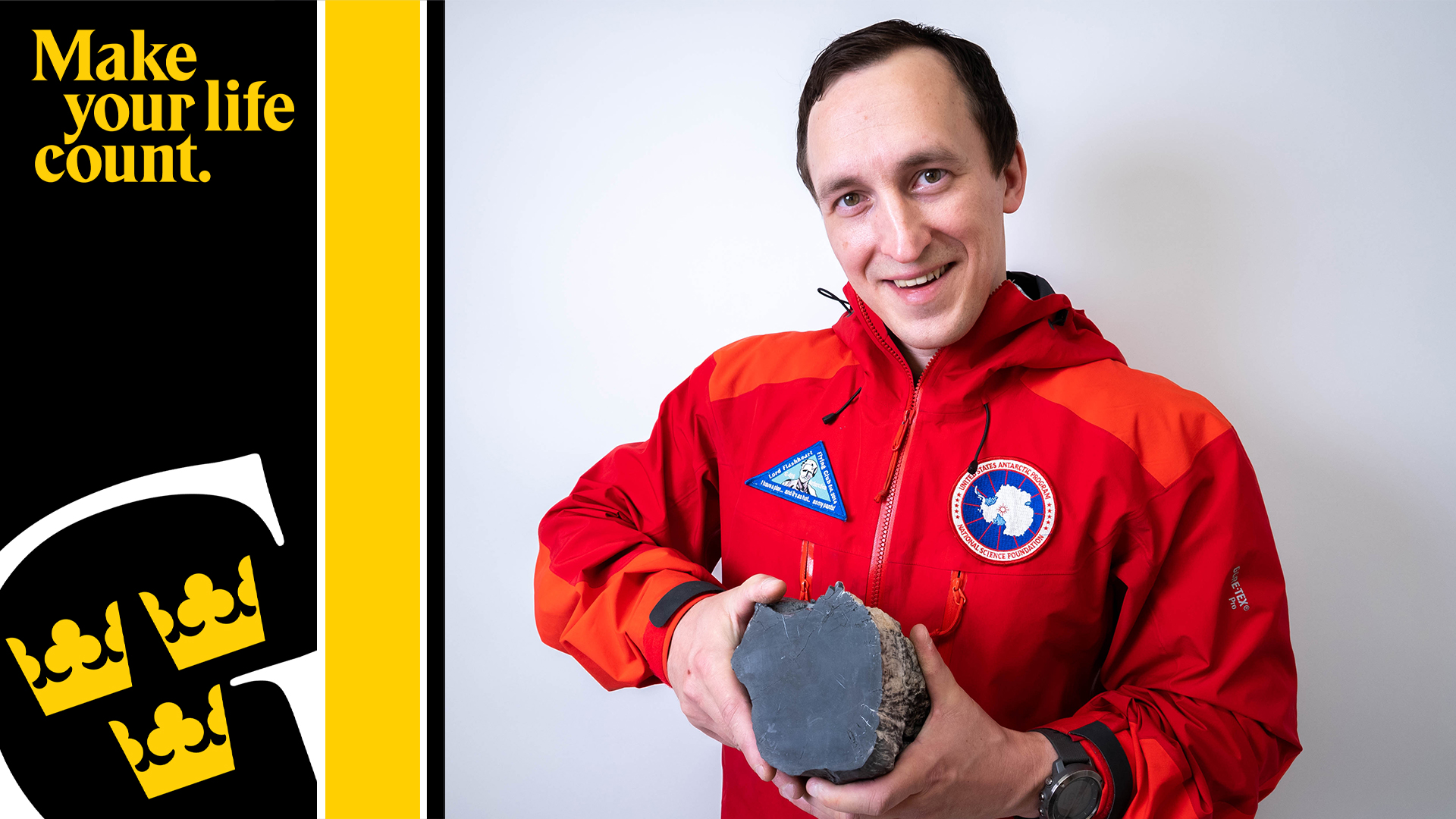Gustavus Adolphus College geology professor Erik Gulbranson, alumnus Aiden Dahlseid ‘21, and current student Morgan Mellum ‘23 recently partnered to author a new peer-reviewed journal article that was published in Scientific Reports on Tuesday, May 24, 2022. Scientific Reports, which is affiliated with Nature, is the sixth-most cited peer-reviewed journal in the world.
Authored in partnership with with Gulbranson’s colleagues from the University of Kansas, Park University, and the Università di Siena in Italy, the article—titled “Paleoclimate-induced stress on polar forested ecosystems prior to the Permian–Triassic mass extinction”—discusses how the research team used data from fossilized Antarctic trees to learn more about the Permian mass extinction that wiped out between 70 and 95 percent of the world’s terrestrial and marine species more than 250 million years ago. The team’s groundbreaking techniques support the conclusion that rather than a singular extinction event, the Permian extinction may in fact have been a series of events that led to mass die-offs of plant and animal life over the course of millions of years and included climate change as a leading cause.
“Our results come directly from the organisms that went extinct,” Gulbranson said. “Our work supports other studies that suggest a series of events led to the Permian extinction, but our project makes a more explicit tie to climate change than existing studies that indirectly make the connection by reviewing sediment data.”
Or, as the research team puts it, “…results suggest that paleoclimate change during the late Permian exerted significant stress on high-latitude forests, consistent with the hypothesis that climate change was likely the primary driver of the extinction of the glossopterid ecosystems.”
Last fall, the results of Gulbranson’s previous field work in Antarctica were included in a New York Times photo essay about the secrets revealed by melting polar ice. He regularly collaborates with other leading geological researchers from around the globe to measure the impact of ancient climate change on flora and fauna, with a particular emphasis on the life and death of trees. For Gulbranson, the opportunity to include undergraduate students in major projects like this is one of the primary reasons he works at Gustavus.
“Morgan and Aiden participated in measuring the width of tree-rings in fossilized trees, then performed the scientific technique of cross-dating to see when trees grew at the same time. Their contributions helped to produce the key data we needed to draw the conclusions about this extinction interval,” Gulbranson said. “We spent January Term 2021 working together to create an outline and draft sections of the article, and their participation has continued to help us get this research published and shared with a wide audience.”

For Mellum, a rising senior from Edina, Minn. who studies geology, environmental studies, and French, the article is the most tangible result of the research project that she’s been working on for most of her undergraduate career.
“I applied for the First-Year Research Experience (FYRE) summer program during my first year at Gustavus. I was paired with Dr. Gulbranson for summer research and we immediately began working on the material that ultimately resulted in the Scientific Research article,” Mellum said.
“It’s incredible. It’s something I wasn’t expecting to be so big,” she continued. “We went and presented some of this work at the Geological Society of America conference and it got a lot of attention. Erik was approached right away by other prominent scientists who considered this to be especially high-impact research.”
Mellum is also involved on campus as a member of the Geology Club, student worker in the Department of Geology, and NCAA Division III student-athlete on the Gustavus swim and dive team. Last summer, she completed a Fulbright-funded research collaboration with Canadian researchers in which she created a three-dimensional virtual model of an insect that had been preserved in 100-million-year-old amber. After graduating from Gustavus next spring, she plans to pursue a PhD in geology with a focus on ancient soils and ancient climates.
But first, there’s more research to be done.
This summer, Gulbranson and Mellum will travel to Big Bend National Park in Texas, where they will explore fossil records that will shed additional light on the Cretaceous mass extinction event—best known for ending the dinosaur era and ushering in the beginning of the modern Cenozoic era—that took place approximately 66 million years ago.
“Big Bend is one of the most well-preserved areas on land that is close to where the asteroid hit that kicked off this extinction event,” Gulbranson explained. “We’re collecting data that may ultimately allow us to see if we can find any differences in the timeline of extinction between terrestrial and aquatic populations.”
For Mellum, the trip—and the lab research, analysis, and writing that will follow—will be another chance to reflect on her ongoing growth as a researcher who is especially well-rounded due to her liberal arts education.
“I’m a lot more confident in myself and overall knowledge of what I’m working on and how it connects to the bigger picture than I was as a first-year student,” Mellum said. “Dr. Gulbranson is a great teacher. He took a bunch of students with no direct experience in ancient climates and brought us up to speed by making the science accessible and then letting us run.”
“My role as a faculty member, in addition to teaching, allows me to involve students in this original research. Morgan is a great example. She’s done everything from field work and laboratory research to analysis, writing, and ultimately being published as an undergraduate,” Gulbranson said. “In addition to contributing to ongoing scientific research that helps us better understand our world, these collaborations with students are why I do the work I do.”

Leave a Reply